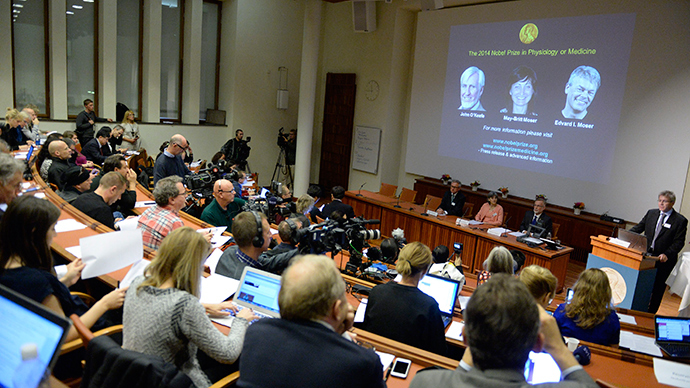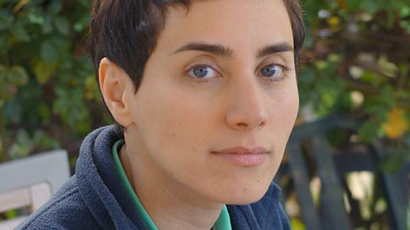Nobel for ‘inner GPS’: Discoveries of brain’s mapping cells get high medical award

The brain’s “inner GPS” – neurons that allow mapping and navigating in a complex environment - scored a Nobel Prize for medicine. The 2014 award went to American-British neurologist John O'Keefe and Norwegian scientist spouses May-Britt and Edvard Moser.
"The discoveries...have solved a problem that has occupied philosophers and scientists for centuries," the Nobel Assembly at Sweden's Karolinska Institute said Monday in a statement announcing the laureates.
"How does the brain create a map of the space surrounding us and how can we navigate our way through a complex environment?" the body added.
The cells, the discovery of which was recognized this year by the Nobel Committee, are called ‘place and grid’ cells.
Place neurons were first discovered by UK-based researcher John O'Keefe back in 1971 as he and his student Jonathan Dostrovsky studied the hippocampus of rats, the region of brain responsible for turning short-term memory into long-term. The neurons fire when an organism finds itself in a particular place, which helps the brain to recognize the location.

Grid neurons, which were found by May-Britt and Edvard Mosers in 2005 as they followed up on O’Keefe’s studies, are located in the entorhinal cortex, a place of the brain working as an interface between the hippocampus and the neocortex, the part involved in many higher neural functions, including spatial reasoning and cognition.
These neurons fire as an organism moves, forming a hexagonal lattice when the signals are matched to the environment – hence the name. They are believed to be responsible for path integration – that is, how we find our way in our surroundings.
"[This system is] affected in several brain disorders, including dementia and Alzheimer's disease,” the Nobel Committee said.
"Knowledge about the brain's positioning system may, therefore, help us understand the mechanism underpinning the devastating spatial loss that affects people with this disease," the statement added.
O'Keefe is director of the Sainsbury Wellcome Centre in Neural Circuits and Behaviour at University College London.
The Mosers both work in scientific institutes in the Norwegian town of Trondheim. They join an exclusive club of married couples awarded the Nobel Prize, which includes physicists Pierre and Marie Curie.
May-Britt Moser told Reuters she danced and drank champagne after learning of the honor.
"This is so great, this is crazy. I am just jumping, screaming," she said. "I am so proud of all the support that we have had. People have believed in us, in what we have been doing and now this is the reward."
Norwegian TV showed the scientist twirling around with her hands raised, holding a glass of champagne at a party in Trondheim. Her co-workers sang "Happy Nobel to you" to the tune of ‘Happy Birthday’.
Her husband was on a plane bound for Munich at the time the news broke, so he only found out after someone met him at the airport with flowers.














